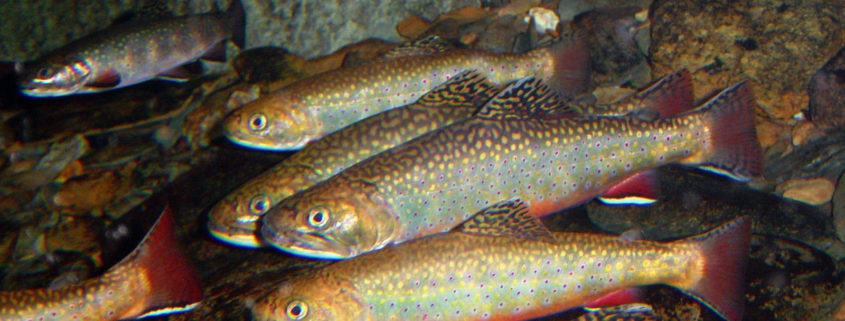by Jake Lemon, Eastern Angler Science Coordinator, Trout Unlimited
TU and WV Rivers have spent the past few years travelling to communities along proposed natural gas pipeline routes to educate citizens, train volunteers and help launch local monitoring efforts.
We strive to use the best available data to prioritize our monitoring sites and to ensure that we are monitoring the most ecologically-sensitive waters, including streams that sustain wild and native trout populations. But while working with anglers and conservationists in these communities, it became clear that there are significant gaps in datasets detailing the location and distribution of wild and native trout streams.
This begged the question: If conservation organization and agencies don’t know where these sensitive species are, how could we adequately protect them?
In 2017, with funding from the Appalachian Stewardship Foundation, TU and WV Rivers initiated a project to expand scientific understanding of the distribution of wild and native trout populations in areas of West Virginia that are at risk from energy development.
This project is comprised of several phases. In Phase 1, we compiled the existing data on wild and native trout populations, converted that data to spatial mapping applications and identified gaps in our knowledge in key areas. A map resulting from that analysis can be found at the link below. This map shows trout streams documented by WVDEP, naturally reproducing trout streams according to WVDNR, streams listed on WVDEP’s B2 trout list, and trout streams with Tier 3 protections.
In Phase 2, we began working with volunteers to locate undocumented trout populations by collecting “environmental DNA” (eDNA) samples. This emerging technique works by detecting DNA that aquatic species release into the environment through skin cells, waste, etc. In eDNA sampling, stream water is pumped through a filter, which is then sent to a genomics lab where it is analyzed for genetic markers. eDNA can detect whether a particular trout species exists in that stream.
TU staff and volunteers recently sampled five streams along the Atlantic Coast Pipeline and Mountain Valley pipeline for eDNA. Those samples are currently undergoing analysis. We hope that scientific documentation of these populations can lead to official designation of these streams as trout waters, which would lend additional protections, such as additional scrutiny of erosion controls, or time-of-year restrictions for stream crossings.
We have reason to believe that this model will work. In the late summer of 2017, TU and WV Rivers successfully collaborated with WVDNR and WVDEP to advocate for a survey of Clover Creek, a stream in Pocahontas County along the proposed Atlantic Coast Pipeline route that had undocumented brook trout populations. The survey showed robust populations and led to recognition of Clover Creek as a naturally reproducing trout stream.
TU and WV Rivers plan to conduct additional sampling in the spring, and we will meet with state agency contacts to work toward official designation of these streams, ensuring they receive the appropriate regulatory protections.





